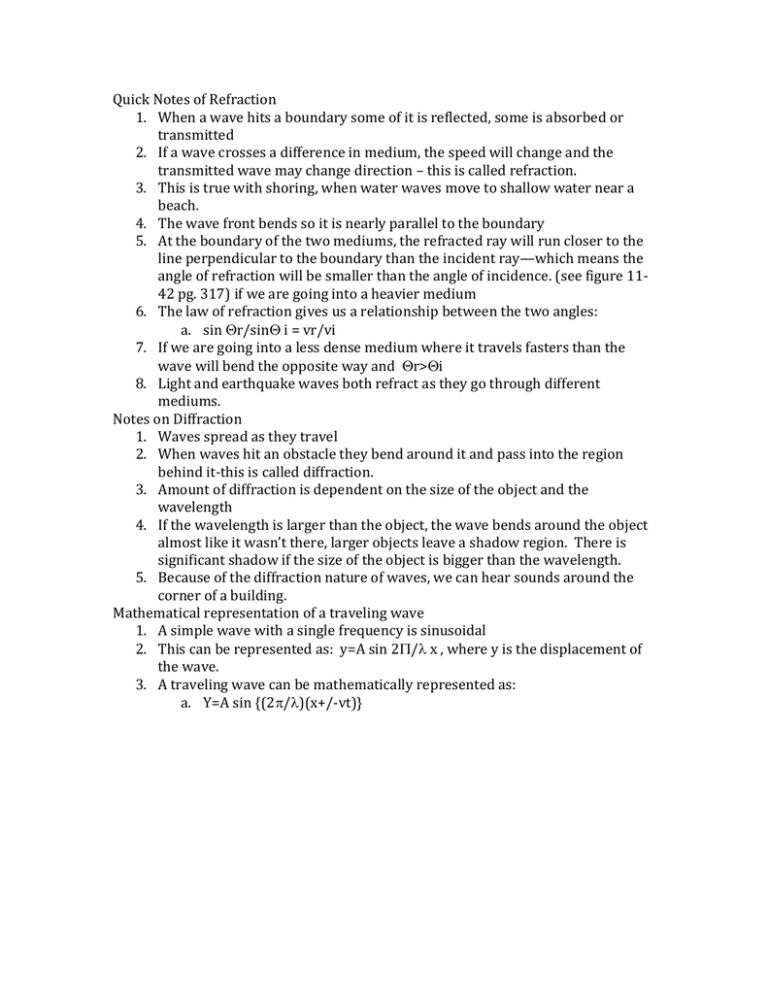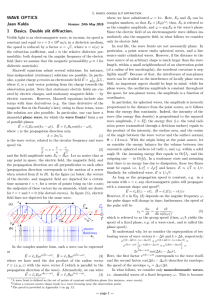Quick Notes of Refraction
advertisement

Quick Notes of Refraction
1. When a wave hits a boundary some of it is reflected, some is absorbed or
transmitted
2. If a wave crosses a difference in medium, the speed will change and the
transmitted wave may change direction – this is called refraction.
3. This is true with shoring, when water waves move to shallow water near a
beach.
4. The wave front bends so it is nearly parallel to the boundary
5. At the boundary of the two mediums, the refracted ray will run closer to the
line perpendicular to the boundary than the incident ray—which means the
angle of refraction will be smaller than the angle of incidence. (see figure 1142 pg. 317) if we are going into a heavier medium
6. The law of refraction gives us a relationship between the two angles:
a. sin r/sin i = vr/vi
7. If we are going into a less dense medium where it travels fasters than the
wave will bend the opposite way and r>i
8. Light and earthquake waves both refract as they go through different
mediums.
Notes on Diffraction
1. Waves spread as they travel
2. When waves hit an obstacle they bend around it and pass into the region
behind it-this is called diffraction.
3. Amount of diffraction is dependent on the size of the object and the
wavelength
4. If the wavelength is larger than the object, the wave bends around the object
almost like it wasn’t there, larger objects leave a shadow region. There is
significant shadow if the size of the object is bigger than the wavelength.
5. Because of the diffraction nature of waves, we can hear sounds around the
corner of a building.
Mathematical representation of a traveling wave
1. A simple wave with a single frequency is sinusoidal
2. This can be represented as: y=A sin 2/ x , where y is the displacement of
the wave.
3. A traveling wave can be mathematically represented as:
a. Y=A sin {(2/)(x+/-vt)}






